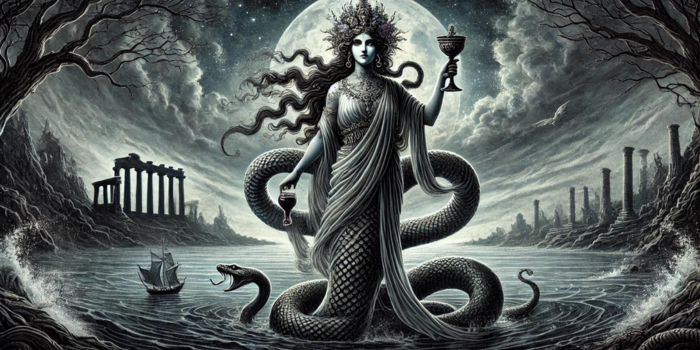
Lamia: The Enigmatic Serpent Woman of Greek Mythology
|
|
Time to read 6 min
|
|
Time to read 6 min
Lamia, a captivating and fearsome figure in Greek mythology, is often depicted as a serpent woman or a monstrous entity. Known for her beauty and malevolence, Lamia has a complex and tragic backstory that intertwines themes of love, jealousy, and revenge. Her influence spans various aspects of myth, from haunting nocturnal visions to powerful maternal instincts.
Unlock the Mysteries of the Ars Goetia with a Free Oracle Tarot Reading , performed by the most experienced masters of Terra Incognita . This powerful reading is not a game—it is a serious and profound spiritual tool designed to provide clarity, guidance, and transformation. Only sincere requests are taken into consideration, ensuring that each reading is handled with the utmost dedication and expertise. Your personalized results will be delivered within 48 hours , offering you the wisdom and insight you seek.
👉 Submit your request here: Free Ars Goetia Oracle Tarot Reading
Are you ready to uncover the answers hidden within the shadows?
Connecting with Lamia involves understanding her dual nature of beauty and terror. To attune to this enigmatic figure, one might:
Connecting with Lamia requires a profound respect for her complex and multifaceted nature. Practitioners might also engage in activities that honor both the light and shadow aspects of their personality, such as journaling, shadow work, or creative expression through art and storytelling.
Lamia is often associated with the moon. The moon, with its phases and mysterious glow, reflects Lamia's nocturnal and transformative aspects. This connection underscores themes of change, cycles, and hidden depths, highlighting Lamia's role as a figure of mystery and darkness.
Silver is the metal most closely linked to Lamia. Known for its reflective properties and connection to the moon, silver symbolizes purity, intuition, and protection. Adorning oneself with silver jewelry or incorporating silver items in rituals can help strengthen the connection to her. Additionally, silver's historical use in protective talismans underscores its significance in warding off malevolent forces.
The element of Lamia is Water, representing her fluid and transformative nature. Water symbolizes both life and destruction, aligning with her ability to nurture and devastate. Water rituals, such as bathing or using sacred springs, are ways to honor Lamia and invoke her energy. The cleansing and reflective properties of water also mirror Lamia's dual role as a beautiful woman and a fearsome predator.
Lamia is associated with the astrological sign of Scorpio. Scorpio, ruled by Pluto, shares Lamia's attributes of intensity, transformation, and secrecy. The mysterious and passionate nature of Scorpio aligns with Lamia's spirit and her complex narrative. Scorpio's connection to rebirth and regeneration also reflects Lamia's ability to transform and adapt, embodying the cycle of destruction and renewal.
Offerings to Lamia can include:
These offerings not only honor Lamia but also invite her presence and blessings into one's life. Engaging in acts of introspection and transformation can be a powerful way to connect with her energy.
Lamia shares relationships with several other figures in Greek mythology:
She has been a significant figure in various cultures, influencing folklore, art, and literature. She is often depicted in paintings, sculptures, and writings as a symbol of beauty, danger, and the supernatural. Her story has inspired numerous adaptations and interpretations, reflecting her enduring appeal and complexity.
Lamia has appeared in various movies and TV shows, often depicted as a mysterious and seductive figure. Notable portrayals include:
Lamia is a prominent figure in literature, especially in works exploring Greek mythology and supernatural themes. Noteworthy mentions include:
Despite her significant role, several misconceptions surround herr:
Demon and Spirit Attunements, Amulets, and Grimoires are potent spiritual tools crafted to align your energy with powerful entities, offering protection, guidance, and healing. These sacred items bridge the gap between the earthly and spiritual realms, enabling you to connect with higher forces for clarity, empowerment, and inner strength. By wearing a demon or spirit amulet or engaging with a grimoire, you invite these potent energies into your life, providing ongoing support and shielding against negativity.
Demon and Spirit Attunements work to fine-tune your spiritual vibrations, enhancing your connection with specific entities and boosting your intuitive abilities. These practices create a comprehensive spiritual approach that not only protects you from harm but also opens pathways to profound transformation, spiritual growth, and inner wisdom. Through these tools, you harness the ancient powers of demons and spirits, forging a path toward deeper understanding and personal empowerment.